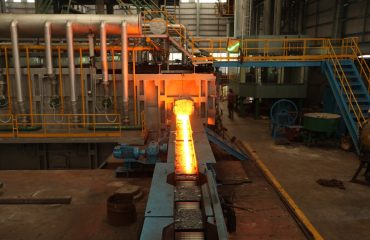In today’s competitive global market, achieving and maintaining ISO compliance is no longer a luxury but a necessity for businesses aiming for sustained growth and success. ISO standards, particularly ISO 9001 (Quality Management Systems) and ISO 14001 (Environmental Management Systems), provide a framework for organizations to optimize their production processes, enhance product quality, and minimize environmental impact. This comprehensive guide delves into the key elements of implementing ISO-compliant production processes, offering practical strategies and insights to help your organization achieve and maintain compliance.
Understanding ISO Standards and Their Relevance to Production
ISO standards are internationally recognized guidelines that specify requirements for various management systems. ISO 9001 focuses on establishing, implementing, maintaining, and continually improving a quality management system (QMS). This means defining processes to ensure consistent product quality that meets customer requirements. ISO 14001, on the other hand, focuses on environmental management, outlining requirements for establishing, implementing, maintaining, and continually improving an environmental management system (EMS). For production processes, this translates to minimizing waste, reducing pollution, and conserving resources. Both standards emphasize a systematic approach, involving planning, implementation, monitoring, review, and improvement. Compliance demonstrates a commitment to quality, environmental responsibility, and operational excellence, boosting your company’s reputation and attracting customers who value sustainability.
Implementing a Robust Quality Management System (QMS)
A robust QMS is the cornerstone of ISO 9001 compliance. This involves defining clear processes for every stage of production, from raw material procurement to finished product delivery. Key elements include:
- Process Mapping: Documenting each step of the production process, identifying potential bottlenecks and areas for improvement.
- Quality Control Checks: Implementing regular checks at various stages to ensure products meet specifications and standards.
- Corrective and Preventive Actions (CAPA): Establishing a system for identifying and addressing deviations from standards, preventing recurrence of defects.
- Documentation and Record Keeping: Maintaining detailed records of all processes, quality checks, and corrective actions.
- Internal Audits: Conducting regular internal audits to assess the effectiveness of the QMS and identify areas for improvement.
- Management Review: Regularly reviewing the QMS performance to ensure its continued effectiveness and alignment with business objectives.
Integrating Environmental Management into Production Processes (ISO 14001)
ISO 14001 compliance requires integrating environmental considerations into every aspect of production. This involves identifying environmental aspects – elements of your operations that can interact with the environment – and associated impacts, both positive and negative. Key steps include:
- Environmental Impact Assessment: Conducting a thorough assessment to identify potential environmental impacts of your production processes.
- Waste Reduction and Management: Implementing strategies to minimize waste generation and properly manage waste disposal in accordance with regulations.
- Energy Efficiency: Implementing measures to reduce energy consumption throughout the production process.
- Pollution Prevention: Implementing controls to prevent pollution from air, water, and land sources.
- Compliance Monitoring: Regularly monitoring compliance with environmental regulations and permits.
- Emergency Preparedness and Response: Developing and implementing plans to address environmental emergencies.
Leveraging Lean Manufacturing and Six Sigma for Enhanced Efficiency
Lean manufacturing and Six Sigma methodologies can significantly enhance the efficiency and effectiveness of ISO-compliant production processes. Lean principles focus on eliminating waste, improving workflow, and optimizing resource utilization. Six Sigma aims to reduce variation and defects in processes, leading to higher quality and consistency. By integrating these methodologies into your QMS and EMS, you can achieve significant improvements in productivity, reduce costs, and improve customer satisfaction. This includes implementing tools like value stream mapping, 5S methodology, and statistical process control (SPC).
Continuous Improvement and the ISO Cycle of Improvement (PDCA)
ISO standards emphasize continuous improvement. The Plan-Do-Check-Act (PDCA) cycle is a fundamental framework for achieving this. This iterative process involves:
- Plan: Identifying areas for improvement, setting objectives, and developing action plans.
- Do: Implementing the action plans and monitoring progress.
- Check: Evaluating the results and identifying any deviations from the plan.
- Act: Taking corrective actions, standardizing improvements, and documenting lessons learned.
By consistently applying the PDCA cycle, organizations can continuously refine their production processes, enhancing efficiency, quality, and compliance.
Implementing ISO-compliant production processes requires a significant commitment to change and improvement. However, the benefits—enhanced quality, reduced costs, improved efficiency, increased customer satisfaction, and a stronger reputation—far outweigh the initial investment. By embracing a systematic approach, leveraging best practices, and fostering a culture of continuous improvement, your organization can successfully navigate the path to ISO compliance and achieve sustainable success.
SEO-Friendly Tags:
- ISO 9001
- ISO 14001
- Production Process Optimization
- Quality Management Systems
- Environmental Management Systems




